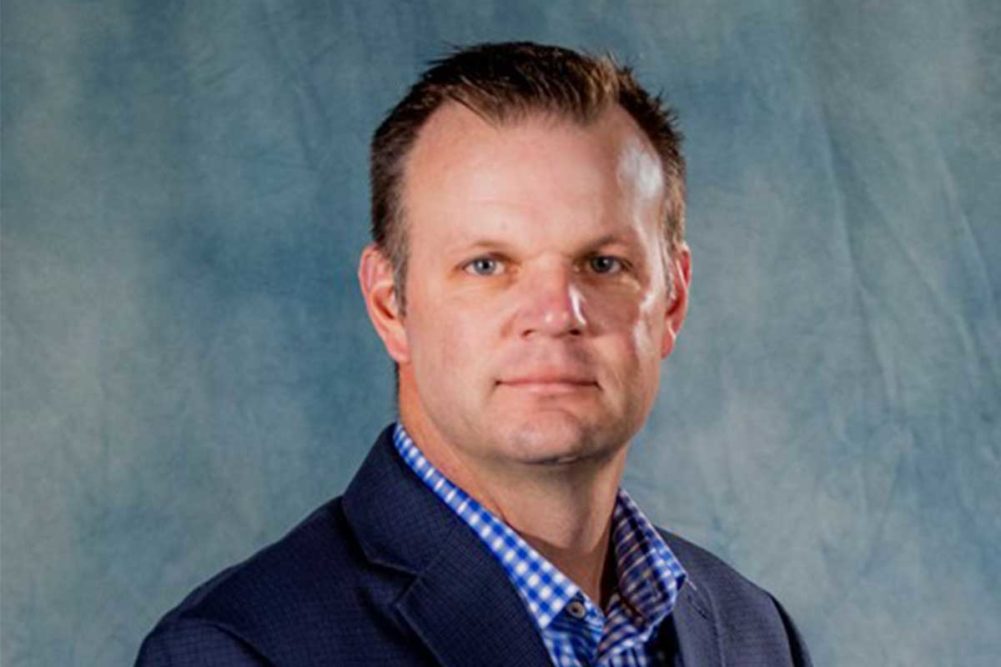Jason Stricker has been in the field of ingredient automation for more than 20 years and has developed a wealth of knowledge in ingredient automation and process solutions. He specializes in guiding customers from the start of a new plant design to helping them increase their capabilities in existing facilities. Mr. Stricker has often been called upon by producers and industry affiliates as a subject matter expert in the areas of ingredient automation/process design, explosion mitigation and regulatory compliance.
He was introduced to the industry by Dave Stricker, his father, a 17-year veteran at Shick Tube-Veyor in Kansas City, Mo. Mr. Stricker spent many summers during his early childhood growing up in the Shick offices reorganizing production order boards and other tasks. His first professional job was as a Shick representative for Thompson Hill. Since then, he has spent 15 years as a company employee, spending more than a decade working in regional and executive account management. More recently, he served as director of sales and marketing and in May 2021 was promoted to the position of senior vice president of sales and marketing for Shick Esteve in Kansas City.
Mr. Stricker earned his bachelor of science degree in biology from Baldwin City, Kan.-based Baker University and is an active member of the Bakery Equipment Manufacturers and Allieds (BEMA) association, where he holds a seat on the Baking Industry Forum (BIF).
What are the first steps bakers should take when starting a new plant design vs. increasing capabilities in existing facilities?
When it comes to new plant design, it is important to consider not only current production needs but to also envision what possible future expansions may produce. It can be difficult to do at first as customers often feel the need to be very specific without knowing exactly what they will do. The reality is that a generalized vision is typically enough to allow suppliers to design for current needs and the increased demand in the future in an economical fashion. When it comes to increasing capabilities within an existing facility, manufacturers are in more of a reactionary mode. They are solving specifically for facility and possible system constraints as the design points to meeting new production demands.
What are the major concerns bakers have about safety and regulation when it comes to ingredient handling?
The three most frequently discussed areas center around safety of personnel, food safety and — when dealing with combustible dusts — maintaining National Fire Protection Agency (NFPA) compliance.
What are the keys to adding a minor and micro ingredient handling system?
The first steps are always to understand the customer goals followed by a detailed recipe/production analysis. Often there is a desire to automate all ingredients, but in operations that use a very wide range of ingredients this may not be economically feasible. The key is to analyze the data and help customers understand the best candidates for automation. This can be based upon amounts per batch, frequency of use or commonality across recipes.
What are the challenges for installing outdoor ingredient handling silos vs. indoor systems?
Each has a particular set of criteria to be evaluated, but neither is particularly challenging. For indoor silos available space can be challenging relative to desired storage capacity. Some areas of the country may require more elaborate or expensive silo pads for outdoor silos.
How do you design an ingredient handling system for future expansion in a new facility?
We refer to this as master planning. Many of our customers may only plan to install one or two lines to start, but they are either building the facility or at least planning it for easy building expansions to house many more. Discussing with them upfront what those planned future lines may produce allows us to design for easier and less intrusive modifications when the time comes. Of course, plans can always change as their business evolves, but knowing what might be coming goes a long way toward accommodating those future needs.
What are the three most overlooked aspects of automating ingredient handling?
First, understand the value proposition for certain features or system designs that may slightly increase upfront capital spending but go a long way toward longevity and reliability while decreasing the total cost of ownership. Second, consider the capabilities and the availability of your workforce. This may lead you to automate portions of the system that in the past would have been handled manually. And third, the process controls are really the heart of automation. Often the focus is predominantly on the equipment, but how operators interact with the system, how maintenance is able to troubleshoot and the data that is available to you are very important. Do not overlook this aspect as this is often a main distinction among suppliers.




